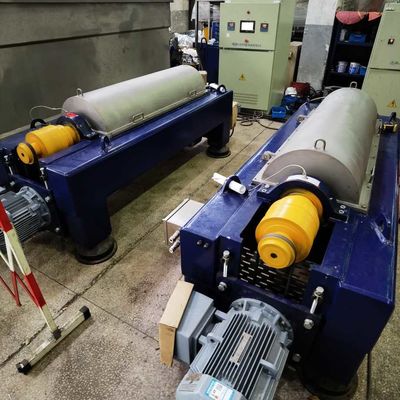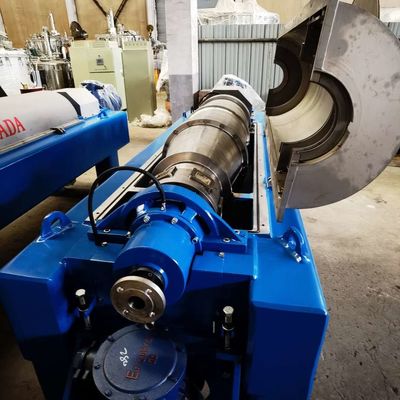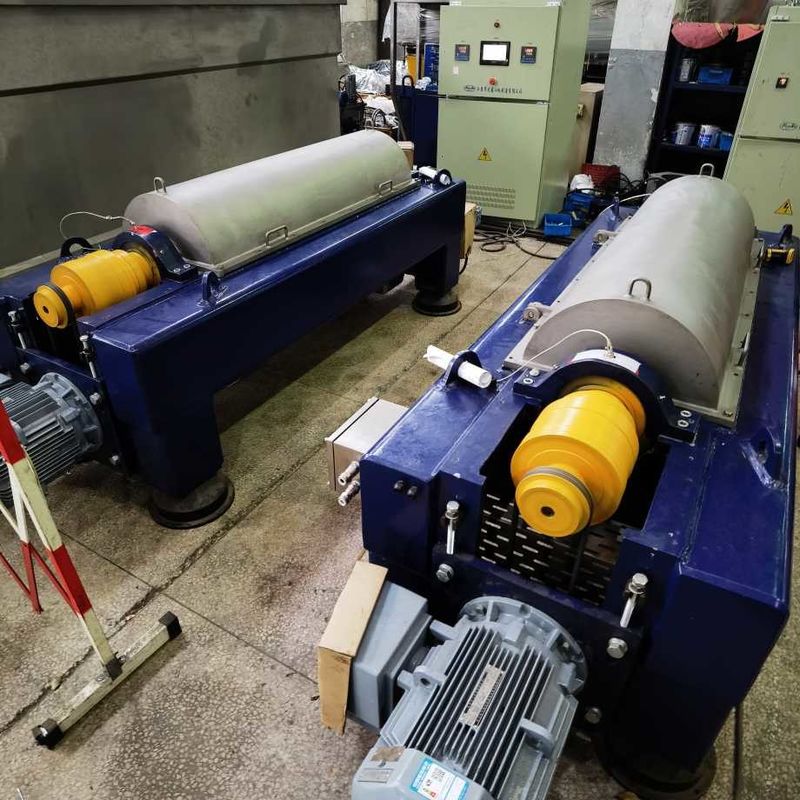Explosion Proof Oilfield Drilling Decanter Centrifuges With Gas Tight Seal
Product Details:
| Place of Origin: | CHINA, JIANGSU |
| Brand Name: | HUADA |
| Certification: | GB/T19001-2016/ISO9001:2015 |
| Model Number: | LWXF |
Payment & Shipping Terms:
| Minimum Order Quantity: | 1 set |
|---|---|
| Price: | USD50000-250000/set |
| Packaging Details: | Standard with wooden pallet and poly film wrapping |
| Delivery Time: | 70 work days |
| Payment Terms: | T/T, L/C, Western Union |
| Supply Ability: | 100 sets per month |
|
Detail Information |
|||
| After-sales Service Provided: | Engineers Available To Service Machinery Overseas | Centrifugal Type: | Decanter Centrifuge |
|---|---|---|---|
| Discharge: | Scroll Discharge | Machine Control: | PLC Control |
| MOC: | Stainless Steel | Certificate: | ISO9001 |
| Operate: | Automatic Continuous Operation | Bearing: | NSK Or SKF |
| Application: | Explosion-proof Decanter Centrifuge | ||
| High Light: | Oilfield Drilling Decanter Centrifuges,GB explosion proof centrifuge,Decanter Centrifuges Explosion Proof |
||
Product Description
LWXF Explosion-Proof Oilfield Drilling Decanter Centrifuge With Gas-Tight Seal Design
Materials
The bowl, conveyor, inlet tube, outlets, cover and other parts in direct contact with the process media are all made of stainless steel. The discharge ports, conveyor flights and feed zone are protected with materials that are highly resistant to erosion. The frame is made of mild steel with an epoxy enamel finish.
Hydro drive, it works in a way which is similar to that of the two motor drive. The difference is to be seen in the design. Instead of the mechanical gear, a rotating hydromotor is installed; this is supplied with hydraulic regulation by a pump unit. Because the differential speed is proportionate to the conveyed quantity of oil, automatic regulation can be provided without any problem.
![]()
Centrifuge Application scope
1) City tap water, domestic sludge dewatering;
2) Oil drilling mud dewatering;
3) Sludge Oil Recovery;
4) Refinery sludge concentrated dehydration;
5) Distiller ‘s grains dehydration;
6) Paper, printing and dyeing wastewater separation;
7) Medical sludge dewatering;
8) Soy protein dehydration;
9) Plant oil clarification and separation;
10) Cosmetic clarification and separation;
11) Bleaching powder separation.
12) Palm oil sludge Separating.
![]()
Technical Parameters
| Model | Bowl Diameter (mm) | L/D | Bowl Speed (r/min) | Separation Factor | Power of Driving Motor (kW) | Weight (kg) | Dimension (L×W×H) (mm) |
| LWFX355*1460 | 350 | 4.17 | 4000 | 3130 | 22-30 | 2200 | 3450*1010*1030 |
| LWFX420*1680 | 420 | 4 | 3600 | 3050 | 30-37 | 4000 | 3500*1450*1300 |
| LWFX530*2120 | 530 | 4 | 3200 | 3040 | 45-55 | 5500 | 4100*1600*1450 |
| LWFX720*2880 | 720 | 4 | 2000 | 1610 | 110 | 11000 | 5300*2050*1750 |
Design
One motor drive, this is a very simple design and are therefore cheap to purchase and operate. One motor drive are used when the solids volume is constant, the solids are easy to convey and the requirements regarding the residual water content of the solids are not very stringent, in other words, bowl and differential speed regulating facilities are not necessary.
The input shaft of the drive is set in motion by the main motor via a second belt drive. This generates the differential speed as a function of bowl speed and gear transmission. This can be easily changed by replacing the belt pulleys.
Two motor drive, it enable the differential speed to be regulated cost-effectively under good operating conditions; wide regulating ranges are possible. The secondary motor sets the input shaft of the gear in motion and generates the differential speed as a function of bowl speed and gear transmission.
The differential speed can easily be regulated by changing the motor speed. Two motor drive are used whenever solid volumes fluctuate significantly, when solids are conveyed under difficult conditions and when particularly stringent requirements are applicable with regard to residual water content.
Hydro drive, it works in a way which is similar to that of the two motor drive. The difference is to be seen in the design.Instead of the mechanical gear, a rotating hydromotor is installed; this is supplied with hydraulic regulation by a pump unit. Because the differential speed is proportionate to the conveyed quantity of oil, automatic regulation can be provided without any problem.






